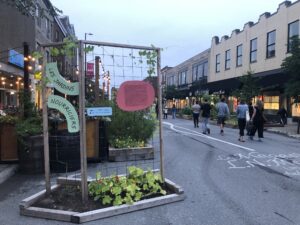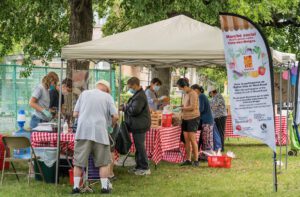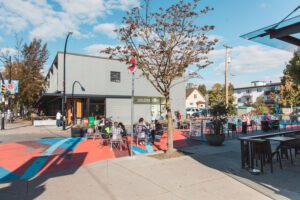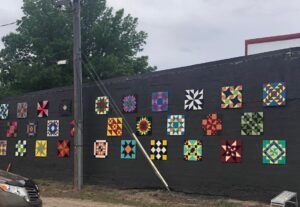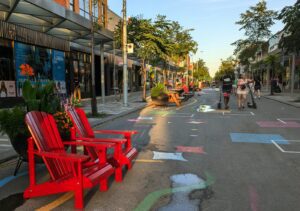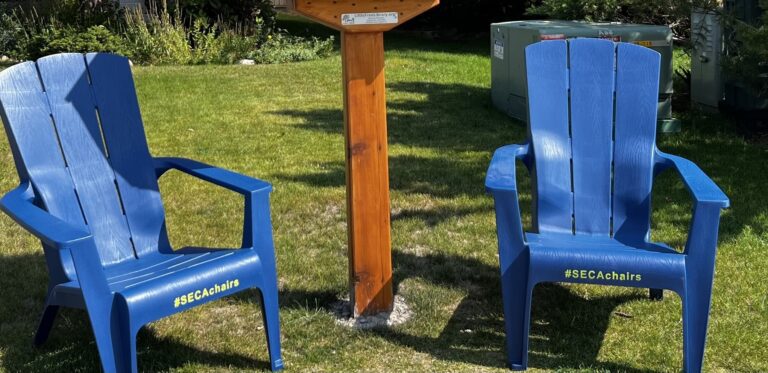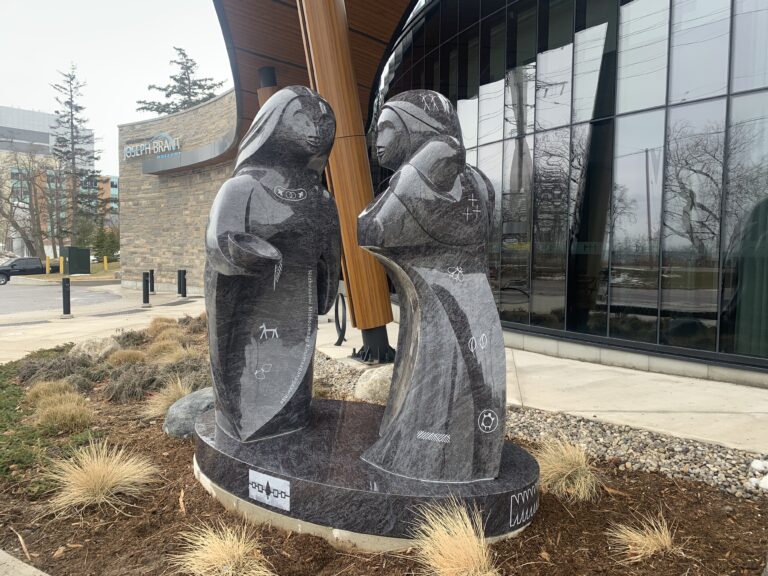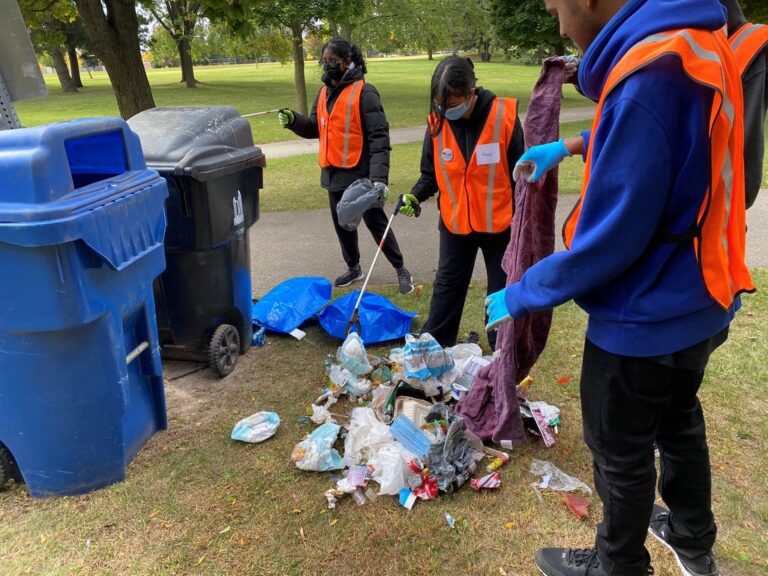Cet article fait partie d'une série explorant les liens entre la création de lieux et le bien-être des communautés, rédigée par la Communauté canadienne de création de lieux et par Villes heureuses. S'appuyant sur le projet projet Power of Placemaking et de nos Conversations communautaires, cet article partage les enseignements tirés de l'impact de la création de lieux à l'échelle locale sur l'économie, y compris le rôle des individus, des entreprises, des groupes communautaires et des organisations.
Cet article répond aux questions posées lors de notre conversation avec Ramona Gallagher, directrice générale de Ma rue principaleUn groupe de créateurs de lieux issus de groupes communautaires s'est réuni pour discuter de la manière dont la création de lieux peut renforcer les économies locales. Que vous vous demandiez comment établir des liens avec les entreprises locales pour accroître la portée de votre projet ou que vous cherchiez de l'inspiration pour commencer, découvrez des stratégies et des idées pour créer des lieux prospères et attrayants pour tous.
Comment l'aménagement du territoire peut-il contribuer à des économies dynamiques et renforcer les communautés locales ?
En créant des espaces vivants et accueillants, l'aménagement du territoire peut inciter les gens à passer plus de temps sur leur lieu de destination, à nouer des liens avec d'autres personnes et à se rendre dans les magasins et les restaurants des environs. Cette énergie attire les gens, augmente la fréquentation et aide les entreprises locales à prospérer. Une étude réalisée par The Creative School at Toronto Metropolitan University, The Daniels Corporation, Lemay, Entro et MASSIVart a révélé un retour sur investissement positif pour les activités de création de lieux, notamment une perception positive accrue d'un lieu, une plus grande probabilité de recommander ce lieu et une augmentation de 50 % du temps passé dans un lieu ayant fait l'objet d'interventions de création de lieux.
L'aménagement d'un lieu est fondamentalement relationnel. Elle crée des liens entre voisins qui partagent un banc dans un parc ou se croisent lors d'un événement communautaire. Ces relations peuvent améliorer la santé de la communauté, contribuer à la résilience climatique et créer un réseau de soutien. créer un réseau de soutien. Les communautés dotées d'une cohésion sociale ont également été à la croissance économique : elles jouissent d'une meilleure qualité de vie-Elles bénéficient d'une meilleure qualité de vie, d'une confiance accrue et d'un soutien aux entreprises locales.
Un "jardin nourricier" le long d'une rue piétonne de Montréal. Photo de l'artiste : Emma Avery
De nombreuses villes ont vu leurs centres-villes se vider à la suite de la pandémie. Les projets d'aménagement du territoire ont été utilisés pour favoriser les liens entre les communautés, attirer les touristes et stimuler la croissance économique, tout en créant des espaces publics qui se sentent plus sûrs et plus accueillants. Les organisations, y compris les zones d'amélioration commerciale (ZAC), peuvent utiliser des initiatives de création de lieux, telles que des sièges extérieurs ou des œuvres d'art public, pour inviter les gens à revenir et soutenir le rétablissement des rues principales. À St. Thomas, en Ontario, une librairie locale Thomas, en Ontario, une librairie locale a créé un jardin de lecture - une petite cour derrière le magasin avec des sièges - pour des événements communautaires.
Mais il ne s'agit pas seulement du rétablissement après une pandémie. L'aménagement du territoire peut aider les communautés à traverser d'autres périodes difficiles, comme les projets de construction. Par exemple, un nouveau programme permanent à New York permet aux bâtiments d'exposer des œuvres d'art sur des protections temporaires, offrant ainsi des moyens créatifs de maintenir le dynamisme des communautés et la prospérité des entreprises à mesure que l'environnement urbain change.
Comment un projet peut-il soutenir à la fois une économie dynamique et d'autres objectifs communautaires ?
Les meilleurs aménagements sont multiformes et combinent différents objectifs communautaires. Par exemple, une rue ouverte peut donner aux artistes et créateurs publics des occasions rémunérées de se produire, piétonniser une zone pour réduire la pollution et créer des espaces tels que des bancs publics pour que les membres de la communauté puissent se retrouver autour d'une expérience commune.
Il est important de centrer les besoins et les voix de la communauté lors de la conception d'un projet de création d'un lieu. Cela implique de prendre en compte les objectifs et les défis propres au quartier. En concevant des projets avec En concevant des projets avec la collectivité, les responsables de la place créent des environnements qui répondent à différents objectifs à la fois, et qui se renforcent même les uns les autres. L'infrastructure verte (comme une zone de pollinisation dans une rue principale) améliore l'esthétique et la résilience climatique tout en créant un lieu attrayant pour les habitants et les entreprises locales. Un projet d'art public crée un sentiment d'appartenance et attire les gens dans un centre commercial.
"Nous devons trouver ce qui fonctionne dans notre communauté et ce qui fonctionne avec notre population", a déclaré Ramona Gallagher, gestionnaire de portefeuille pour My Main Street. "Cela sera différent d'une communauté à l'autre.
Lors de notre conversation communautaire sur le pouvoir de l'alimentation et du jardinage, un participant a fait part des avantages du programme de stands agricoles à Calgary, qui répond à des objectifs spécifiques : apporter des sources d'aliments frais et accessibles à la communauté et soutenir financièrement les agriculteurs locaux. De nombreux autres projets de marchés publics ont également fonctionné en tandem de cette manière, en faisant de la place aux vendeurs locaux et en fournissant des aliments sains à la communauté, tout en créant un espace pour les relations de voisinage.
Un marché public à Montréal qui offre des liens sociaux et des aliments locaux dans le quartier Côte-des-Neiges. Photo : Agora au service de la santé communautaire.
Comment les projets communautaires peuvent-ils collaborer avec les entreprises locales ?
Certaines initiatives de création de lieux visent spécifiquement à soutenir les entreprises locales ou sont soutenues par une entreprise. Par exemple, une chasse au trésor dans les commerces locaux met en valeur les entreprises du quartier. D'autres événements sont à caractère social et attirent des foules, comme les festivals organisés dans les rues principales, qui profitent aux commerces locaux et augmentent leur chiffre d'affaires.
Les groupes d'aménagement du territoire peuvent collaborer avec les entreprises locales pour organiser des événements publics, où les entreprises fournissent des parrainages ou des contributions en nature et les groupes communautaires apportent un public. Par exemple, ils peuvent coorganiser des fêtes de quartier, des marchés ou des ateliers dans les rues principales. Cette collaboration accroît la visibilité des entreprises et les liens avec le voisinage, tout en générant des ressources pour les activités communautaires.
Le programme parklet de Vancouver transforme des îlots de rues en places publiques où les gens peuvent se rassembler et passer du temps. Chaque place est gérée par une entreprise locale ou une ZAC qui accepte de participer à la gestion de l'espace, en collaboration avec les résidents locaux. Photo : Alison Boulier Alison Boulier
Une autre stratégie efficace consiste à créer des espaces partagés plus permanents, tels que des parcs, des places ou des centres communautaires, où les entreprises locales peuvent installer des boutiques éphémères, des camions-restaurants ou des stands. Cela stimule les ventes pour les entreprises et crée des espaces publics partagés et dynamiques où les membres de la communauté peuvent passer du temps.
L'implication des entreprises locales dans l'art public est un autre moyen efficace de favoriser la collaboration. Les entreprises peuvent fournir des fonds, des matériaux, un espace physique ou un soutien promotionnel, ce qui renforce la visibilité du projet et son impact sur la communauté. L'art public spécifique à un site et les projets de création de lieux tels que les peintures murales et les bannières renforcent le sentiment d'identité et de fierté du quartier tout en soutenant les artistes locaux en leur offrant des opportunités rémunérées.
Les initiatives sociales et environnementales conjointes, telles que les programmes de recyclage ou les infrastructures adaptées aux vélos, peuvent également aligner les objectifs de la communauté sur les intérêts des entreprises, favorisant ainsi la bonne volonté et le renforcement des liens au sein de la communauté. En travaillant ensemble, les projets menés par la communauté et les entreprises locales créent une relation symbiotique qui améliore l'économie locale, renforce la cohésion sociale et les valeurs partagées, ce qui se traduit par une communauté plus dynamique, plus inclusive et plus résiliente.
Tourism Radville, en Saskatchewan, a utilisé les fonds de l'ICH pour revitaliser un mur de sa rue principale en y peignant des panneaux de courtepointe afin d'encourager les gens à se promener dans le quartier.
Comment les rues ouvertes soutiennent-elles les entreprises locales et le bien-être des communautés ?
Parfois, les propriétaires de commerces craignent que la suppression de l'accès aux voitures ne nuise à leurs affaires. Mais les données relatives à la rue piétonne de l'avenue Mont-Royal montrent le contraire: De 2018 à 2023, le taux d'inoccupation le long de la rue a chuté de 9 %. Une autre étude menée à Toronto révèle que les restaurants participant au programme de terrasses en bordure de rue ont vu leur chiffre d'affaires augmenter de 30 %. Et à Scarborough, le programme PlazaPOPS a commencé à transformer les parcs de stationnement en parcs éphémères pendant la conférence COVID-19, et 100 % des entreprises locales ont participé à ce programme. 100 % des entreprises locales ont soutenu le projet pour qu'il revienne les années suivantes.
Un participant à notre conversation communautaire a cité la Plaza St-Hubert de Montréal comme exemple d'un projet qui s'est adapté aux problèmes d'accessibilité et à l'évolution des habitudes d'achat. La rue a été piétonnisée pour la première fois au cours de l'été 2024, avec du WiFi gratuit, une station de réparation de vélos, une aire de pique-nique et d'autres aménagements. La programmation communautaire comprenait un atelier de couture, une visite autoguidée, de l'art public, des initiatives avec la bibliothèque locale, et plus encore. Ces initiatives créent des espaces tiers où les membres de la communauté peuvent se rassembler, tout en promouvant les entreprises voisines et en renforçant leurs liens avec le public.
La Plaza St-Hubert à Montréal est animée par des peintures murales au sol et des sièges publics. Photo : Zvi Leve : Zvi Leve.
La Plaza St-Hubert est l'une des 11 rues que Montréal rendra piétonnes à l'été 2024, ce qui témoigne d'un engagement ferme à transformer l'espace routier en lieux de vie. Les urbanistes ont également pris des mesures pour améliorer l'accessibilité le long de ces rues. Par exemple, l'arrondissement local offre aux personnes âgées et aux personnes à mobilité réduite un transport gratuit vers l'avenue Mont-Royal, où il n'y a pas de voiture, ainsi qu'un programme de navette à vélo pour se déplacer le long de la rue.
L'aménagement du territoire peut être un outil puissant pour stimuler les économies locales. Il peut favoriser des communautés plus résilientes qui soutiennent un ensemble diversifié de boutiques, de restaurants et d'entreprises locales. En créant des lieux où les gens ont envie de passer du temps, ces projets peuvent attirer plus de monde dans les rues principales et augmenter le chiffre d'affaires des entreprises locales, contribuant ainsi à soutenir l'emploi et les opportunités économiques pour les résidents. Les entreprises locales peuvent être d'importants défenseurs de ce travail. Les responsables de la place peuvent collaborer avec les entreprises locales pour dynamiser de manière créative les rues principales grâce à des projets tels que l'art public, les places assises, les rues ouvertes et les événements. Ces initiatives ne se contentent pas d'attirer les passants, elles favorisent également l'établissement de liens sociaux solides au sein des communautés.
Pour en savoir plus sur la création de lieux, visitez le nouveau site de la Communauté canadienne pour la création de lieux (Canada Placemaking Community). Boîte à outils pour les créateurs de lieuxune collection de ressources créées par une diversité de praticiens dans le but de libérer les connaissances et de partager les meilleures pratiques.

